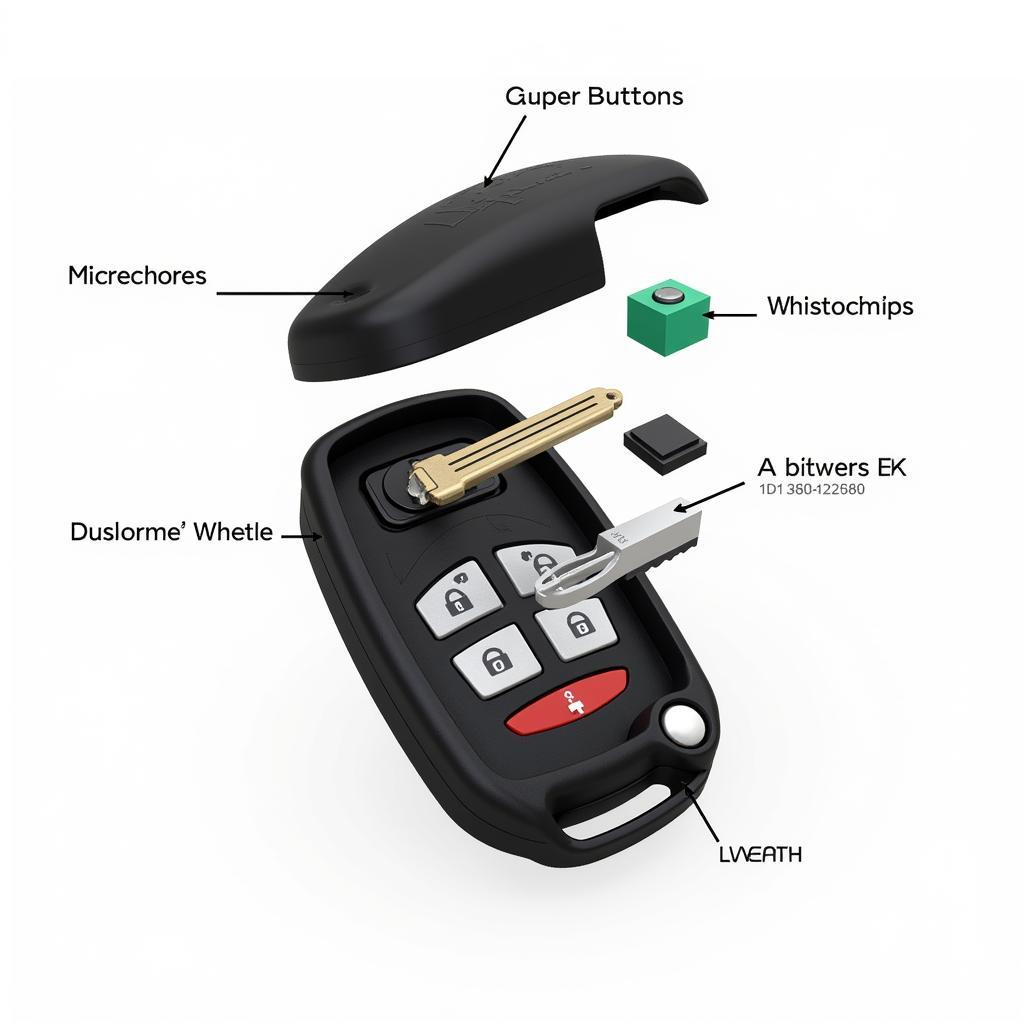A key fob is more than just a fancy keychain; it’s the gatekeeper to your modern vehicle. It unlocks your doors, starts the engine, and sometimes even opens your trunk, all with the push of a button. But what exactly is a key fob, and how does it work its magic? Let’s dive into the world of automotive key fobs and unlock their secrets.
Key fobs use radio waves to communicate with your car’s receiver. When you press a button, the fob transmits a unique coded signal to your vehicle, triggering a specific action. This technology not only offers unparalleled convenience but also enhances security compared to traditional keys. Think of it as a secret handshake between you and your car, preventing unauthorized access. Just after getting my new car radio cd player with bluetooth and aux input installed, I realized how seamlessly it integrates with my key fob, enhancing the overall driving experience.
Decoding the Key Fob: Features and Functionality
Key fobs have evolved significantly over the years, from simple lock/unlock devices to sophisticated systems with a range of features. Let’s break down some common key fob functions:
- Lock/Unlock: This is the most basic function, allowing you to secure and access your vehicle remotely.
- Remote Start: Many modern key fobs offer remote start capabilities, letting you warm up or cool down your car before you even step inside.
- Panic Button: In case of emergency, the panic button triggers the car alarm, drawing attention and potentially deterring a threat.
- Trunk Release: Some key fobs include a button to remotely open the trunk, making loading and unloading groceries or luggage a breeze.
- Proximity Sensors (Keyless Entry): Advanced key fobs utilize proximity sensors to automatically unlock the doors as you approach and lock them as you walk away.
 Internal Components of a Key Fob
Internal Components of a Key Fob
Key Fob Technology: How Does it Work?
The magic behind key fobs lies in Radio Frequency Identification (RFID) technology. Each key fob contains a small microchip that stores a unique identification code. When you press a button, the fob transmits this code via radio waves to a receiver located in your car. The receiver verifies the code and, if it matches, triggers the corresponding action. This wireless communication eliminates the need for physical contact, providing seamless control over various vehicle functions.
Troubleshooting Common Key Fob Issues
Like any electronic device, key fobs can sometimes experience issues. Here are a few common problems and potential solutions:
- Dead Battery: If your key fob isn’t responding, the most likely culprit is a dead battery. Replacing the battery is usually a simple DIY task.
- Out of Range: Key fobs have a limited range. If you’re too far from your car, the signal may not reach the receiver.
- Signal Interference: Other electronic devices or structures can sometimes interfere with the key fob’s signal. Try moving closer to your car or eliminating potential sources of interference.
- Faulty Key Fob or Receiver: If none of the above solutions work, the key fob itself or the receiver in your car may be malfunctioning. In this case, it’s best to consult a qualified automotive technician.
“A key fob is a critical component of modern vehicle security and convenience,” says John Smith, Senior Automotive Technician at Advanced Auto Solutions. “Understanding its functionality and how to troubleshoot common issues can save you time and frustration.” Furthermore, he adds, “Keeping your key fob in good working order ensures seamless access and control over your vehicle.” My land rover bluetooth navigation camera car radio cd 7 also syncs perfectly with the key fob, offering a premium user experience. While researching different car stereo systems, I found a great nikkai bluetooth car stereo cd mp3 player radio cd usb and a classic bluetooth aux cd cassette car radio that offer seamless integration with key fobs. For those looking for a simple and effective upgrade, a car cd bluetooth radio can greatly enhance the in-car experience.
Conclusion
The key fob has revolutionized how we interact with our vehicles, providing unprecedented convenience and security. From unlocking doors to starting the engine remotely, this small but powerful device has become an indispensable part of modern driving. Understanding what a key fob means, its features, and how it works empowers you to make informed decisions about your vehicle’s security and functionality.
FAQ
- Can I replace my key fob battery myself? Yes, in most cases, replacing a key fob battery is a simple DIY task.
- How far can I be from my car for the key fob to work? The range of a key fob typically varies from 30 to 100 feet, depending on the model and surrounding environment.
- What should I do if my key fob is lost or stolen? Contact your car dealer or a qualified locksmith immediately to have a new key fob programmed and the old one deactivated.
- Can I program a new key fob myself? Programming a new key fob often requires specialized equipment and procedures. It’s best to consult your car dealer or a locksmith.
- How much does it cost to replace a key fob? The cost of replacing a key fob varies depending on the make and model of your car and the complexity of the key fob itself.
- What is the difference between a key fob and a smart key? A smart key uses proximity sensors for keyless entry and start, while a key fob requires pressing buttons.
- How do I keep my key fob secure? Store your key fob in a safe place, away from electronic devices that could interfere with its signal, and consider using an RFID-blocking pouch.


